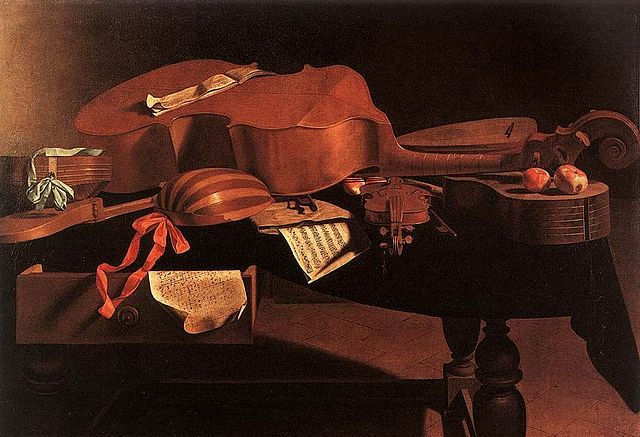In classical music, a fugue is a contrapuntal, polyphonic compositional technique in two or more voices, built on a subject that is introduced at the beginning in imitation, which recurs frequently throughout the course of the composition. It is not to be confused with a fuguing tune, which is a style of song popularized by and mostly limited to early American music and West Gallery music. A fugue usually has three main sections: an exposition, a development, and a final entry that contains the return of the subject in the fugue's tonic key. Fugues can also have episodes—parts of the fugue where new material is heard, based on the subject—a stretto, when the fugue's subject "overlaps" itself in different voices, or a recapitulation. A popular compositional technique in the Baroque era, the fugue was fundamental in showing mastery of harmony and tonality as it presented counterpoint.
The six-part fugue in the "Ricercar a 6" from The Musical Offering, in the hand of Johann Sebastian Bach
Example of a tonal answer in J.S. Bach's Fugue No. 16 in G minor, BWV 861, from the Well-Tempered Clavier, Book 1. The first note of the subject, D (in red), is a prominent dominant note, demanding that the first note of the answer (in blue) sound as the tonic, G.
The interval of a fifth inverts to a fourth (dissonant) and therefore cannot be employed in invertible counterpoint, without preparation and resolution.
Visual analysis of J.S. Bach's Fugue No. 2 in C minor, BWV 847, from the Well-Tempered Clavier, Book 1 (bars 7–12)
Classical music generally refers to the art music of the Western world, considered to be distinct from Western folk music or popular music traditions. It is sometimes distinguished as Western classical music, as the term "classical music" can also be applied to non-Western art musics. Classical music is often characterized by formality and complexity in its musical form and harmonic organization, particularly with the use of polyphony. Since at least the ninth century it has been primarily a written tradition, spawning a sophisticated notational system, as well as accompanying literature in analytical, critical, historiographical, musicological and philosophical practices. A foundational component of Western culture, classical music is frequently seen from the perspective of individual or groups of composers, whose compositions, personalities and beliefs have fundamentally shaped its history.
A youth orchestra performing
An illuminated opening from the Chigi codex featuring the Kyrie of Ockeghem's Missa Ecce ancilla Domini
Baroque instruments including hurdy-gurdy, harpsichord, bass viol, lute, violin, and baroque guitar
Joseph Haydn (1732–1809), portrayed by Thomas Hardy (1791)








